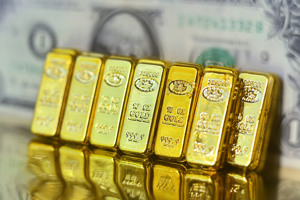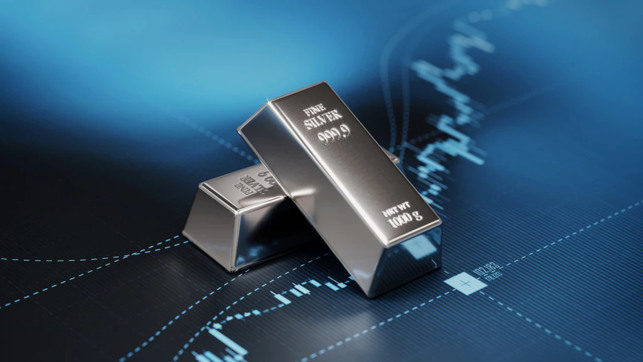Tavex uses cookies to ensure website functionality and improve your user experience. Collecting data from cookies helps us provide the best experience for you, keeps your account secure and allows us to personalise advert content. You can find out more in our cookie policy.
Please select what cookies you allow us to use
Cookies are small files of letters and digits downloaded and saved on your computer or another device (for instance, a mobile phone, a tablet) and saved in your browser while you visit a website. They can be used to track the pages you visit on the website, save the information you enter or remember your preferences such as language settings as long as you’re browsing the website.
| Cookie name | Cookie description | Cookie duration |
|---|---|---|
| tavex_cookie_consent | Stores cookie consent options selected | 60 weeks |
| tavex_customer | Tavex customer ID | 30 days |
| wp-wpml_current_language | Stores selected language | 1 day |
| AWSALB | AWS ALB sticky session cookie | 6 days |
| AWSALBCORS | AWS ALB sticky session cookie | 6 days |
| NO_CACHE | Used to disable page caching | 1 day |
| PHPSESSID | Identifier for PHP session | Session |
| latest_news | Helps to keep notifications relevant by storing the latest news shown | 29 days |
| latest_news_flash | Helps to keep notifications relevant by storing the latest news shown | 29 days |
| tavex_recently_viewed_products | List of recently viewed products | 1 day |
| tavex_compare_amount | Number of items in product comparison view | 1 day |
| Cookie name | Cookie description | Cookie duration |
|---|---|---|
| chart-widget-tab-*-*-* | Remembers last chart options (i.e currency, time period, etc) | 29 days |
| archive_layout | Stores selected product layout on category pages | 1 day |
| Cookie name | Cookie description | Cookie duration |
|---|---|---|
| cartstack.com-* | Used for tracking abandoned shopping carts | 1 year |
| _omappvp | Used by OptinMonster for determining new vs. returning visitors. Expires in 11 years | 11 years |
| _omappvs | Used by OptinMonster for determining when a new visitor becomes a returning visitor | Session |
| om* | Used by OptinMonster to track interactions with campaigns | Persistent |
| Cookie name | Cookie description | Cookie duration |
|---|---|---|
| _ga | Used to distinguish users | 2 years |
| _gid | Used to distinguish users | 24 hours |
| _ga_* | Used to persist session state | 2 years |
| _gac_* | Contains campaign related information | 90 days |
| _gat_gtag_* | Used to throttle request rate | 1 minute |
| _fbc | Facebook advertisement cookie | 2 years |
| _fbp | Facebook cookie for distinguishing unique users | 2 years |
Lab-Made Gold Exists, But It Won’t Shake the Market

In recent years, reports have surfaced claiming that CERN scientists have succeeded in turning lead into gold. At first glance, this might sound like a potential game-changer for the gold market – similar to what happened with the rise of synthetic diamonds. In reality, however, the process is so costly and technically limited that it poses no threat to the gold industry anytime soon.
CERN researchers have indeed demonstrated atomic transmutation – the process of altering the atomic structure of one element into another. Under certain conditions, they have shown that lead atoms can be transformed into gold.
However, the amounts produced in CERN’s particle accelerator are vanishingly small – far less than a nanogram.
To put it into perspective, the quantity wouldn’t even cover the tip of a needle
The process costs millions of euros, while the yield is essentially negligible. It represents a breakthrough in physics, but its impact on the gold market is effectively zero.
Gold Has Also Been Created in Laboratories in Other Ways

The artificial production of gold is not limited to nuclear reactions. Scientists have discovered several chemical and biological methods of producing tiny amounts of gold in the lab.
It’s important to note, however, that all of these methods extract gold already present in solutions or compounds. Unlike nuclear transmutation, they do not create new gold. Nuclear reactions remain the only proven way for humans to generate additional gold atoms.
- Chemical methods: Dissolved gold compounds can be converted into nanoparticles, with size and shape precisely controlled.
- Biological methods: Certain bacteria can survive in metal-rich environments, bind to dissolved gold, and re-precipitate it as solid metal.
- Laser methods: Highly advanced techniques use lasers on gold-bearing solutions, triggering the formation of gold nanoparticles.
Lab-Made Gold is Scarce and Expensive

While ingenious, all these approaches share the same limitation: the quantities produced are extremely small, and the costs are very high.
The gold created is suitable mainly for scientific or medical purposes, not for jewellery or bullion
Even if gold can be synthesised, it must also meet standards of purity, malleability, and conductivity to be practically useful. Another open question is whether central banks and investors would value synthetic gold at the same level as mined gold. For comparison, synthetic diamonds are about ten times cheaper than natural ones.
Lab Gold Has Niche Uses, But Won’t Replace Mining

Although laboratory-produced gold will never replace mined gold, it does offer advantages in specific fields.
Traditional gold mining carries major environmental costs – destroyed habitats, polluted waterways, and toxic waste. Lab gold, by contrast, can be manufactured with tailored properties, making it particularly useful in medicine, electronics, and nanotechnology, where only very small amounts are required.
Unlike synthetic diamonds, which have disrupted the jewellery industry, gold cannot be substituted in the same way. Diamonds are crystalline structures made of compressed carbon, which can be reproduced relatively easily under high pressure. Gold, however, is a chemical element, and current technology cannot produce it in the quantities or at the cost needed to rival mining.
What is far more likely is that advances in laboratory methods will continue to improve the quality and customisability of lab-made gold
This will increase its value in medicine, nanotechnology, and electronics – fields where purity and special properties matter more than volume.
Key Takeaways
The dream of creating gold in the laboratory has fascinated humanity for centuries, from the alchemists of the past to the physicists and chemists of today. Modern science has indeed shown that it is possible, but only in minute amounts and at enormous cost. While nuclear physics, chemistry, and even biology have all contributed to breakthroughs in producing synthetic gold, the volumes remain tiny and the expenses astronomical.
For this reason, laboratory gold will never replace mined gold in jewellery or finance. Instead, its true promise lies in specialised fields such as medicine, nanotechnology, and electronics, where purity, precision, and unique properties matter more than scale. In that sense, lab-made gold is less a threat to traditional mining and more a testament to human ingenuity, a scientific achievement that pushes the boundaries of what is possible, even if it doesn’t transform the global gold market.
In summary: lab-made gold is a remarkable scientific achievement, but it will not shake the foundations of global finance or the investment world.


















